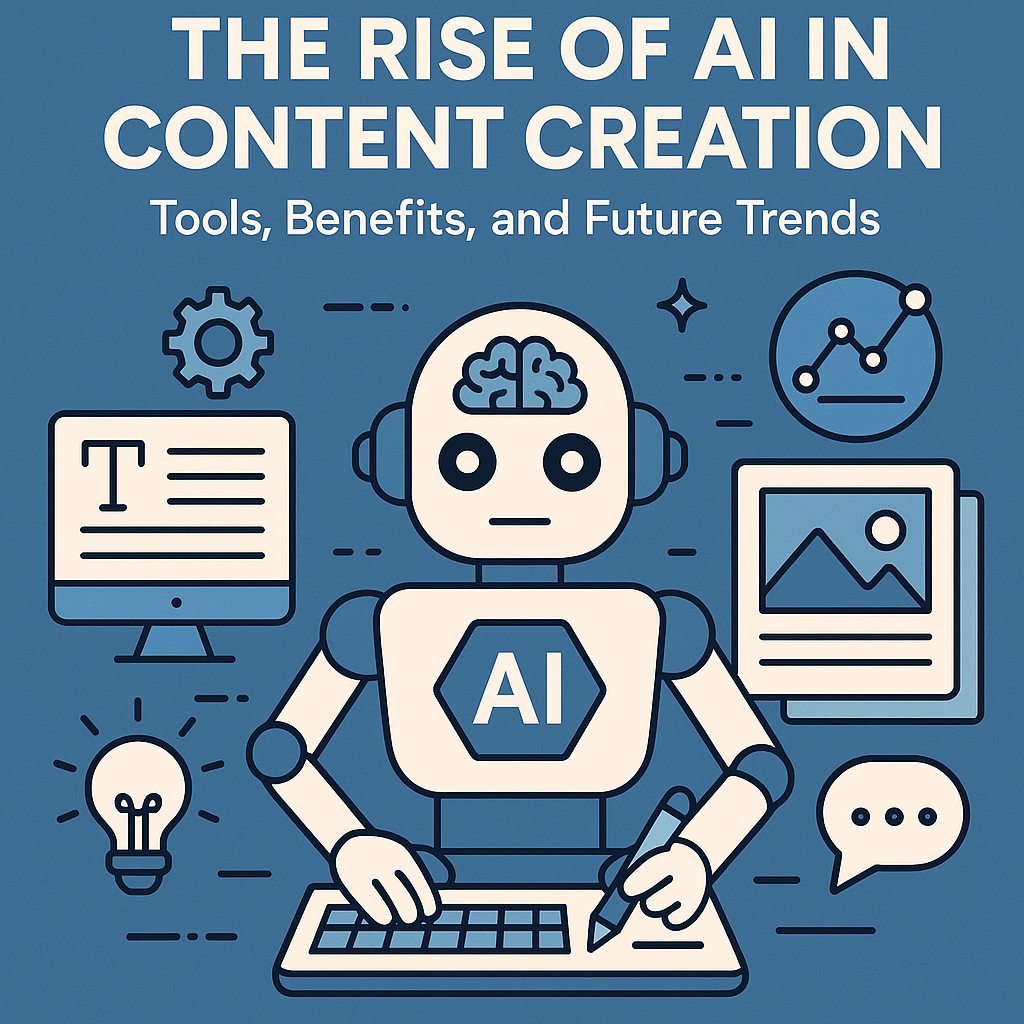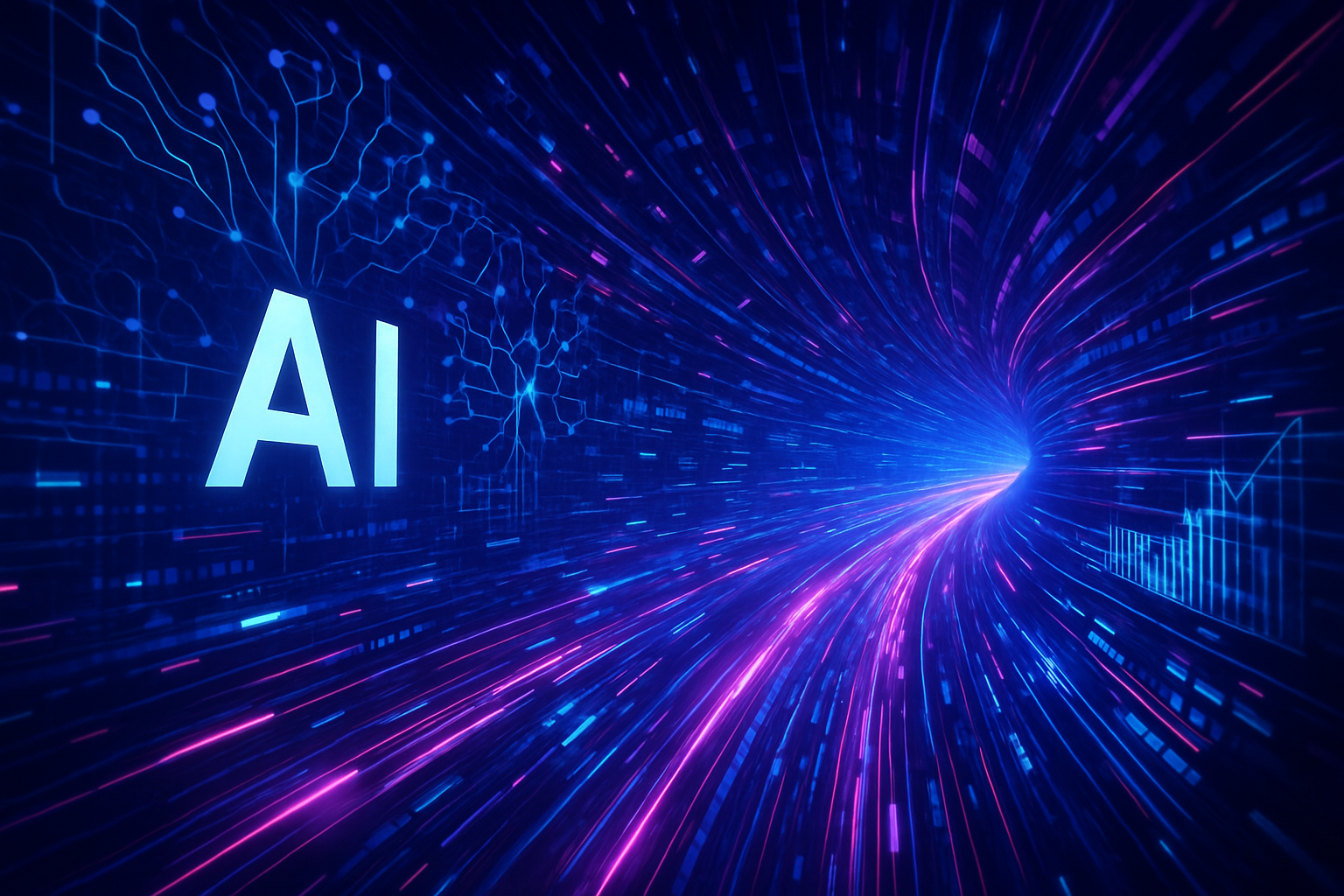Introduction
In an era where content is king, the demand for fresh, high-quality material is insatiable. From blog posts and social media updates to video scripts and marketing copy, businesses and individuals are constantly striving to capture attention. Enter Artificial Intelligence (AI) – a game-changer that’s rapidly transforming how content is conceived, produced, and optimized. Far from replacing human creativity, AI is emerging as a powerful co-pilot, offering unparalleled efficiency, scale, and insight.
This article delves into the burgeoning role of AI in content creation, exploring the innovative tools leading the charge, the tangible benefits they offer, and the exciting trends poised to shape the future of digital storytelling.
The Evolution of AI in Content Creation
AI’s journey in content creation began modestly with basic grammar checkers and spell-check tools. Today, it encompasses sophisticated algorithms capable of generating human-like text, optimizing headlines, summarizing lengthy documents, and even producing entire video scripts. This evolution is driven by advancements in Natural Language Processing (NLP) and Machine Learning (ML), allowing AI models to understand context, tone, and audience intent with remarkable accuracy.
Early adopters quickly realized AI’s potential to alleviate common content creation bottlenecks, such as writer’s block, repetitive tasks, and the sheer volume required to maintain an active online presence.
Key Benefits of Integrating AI into Your Content Workflow
Leveraging AI in content creation isn’t just about automation; it’s about enhancement and strategic advantage.
- Boosted Efficiency and Speed: AI tools can generate drafts, outlines, or entire articles in minutes, drastically reducing the time spent on initial ideation and writing. This allows creators to focus on refining, adding unique insights, and strategizing. Imagine turning around multiple blog posts in the time it once took for one.
- Scalability and Volume: For businesses needing to produce content at scale, AI is invaluable. It enables the creation of a vast amount of diverse content, from product descriptions for e-commerce sites to localized marketing materials for different regions, without proportionally increasing human resources.
- Enhanced Quality and Consistency: AI writing assistants can help maintain consistent brand voice, check for grammatical errors, improve readability, and even suggest stronger vocabulary. While not perfect, they provide a solid foundation that ensures a higher baseline quality across all content.
- SEO Optimization: Many AI tools come equipped with SEO functionalities, suggesting relevant keywords, analyzing competitor content, and optimizing meta descriptions and titles. This data-driven approach helps content rank higher in search engine results, driving more organic traffic.
- Overcoming Writer’s Block: Facing a blank page can be daunting. AI can act as a creative springboard, providing initial ideas, different angles, or rephrasing options to get the creative juices flowing again.

Top AI Tools Revolutionizing Content Creation
The market is burgeoning with innovative AI tools tailored for various aspects of content creation. Here are some of the frontrunners:
- AI Writing Assistants (e.g., Jasper, Copy.ai, Writesonic): These tools leverage large language models to generate diverse forms of text, from blog posts and social media captions to ad copy and email newsletters. They often come with templates for specific content types.
- Grammar and Style Checkers (e.g., Grammarly, ProWritingAid): Beyond basic spell-check, these AI-powered tools offer advanced suggestions for style, tone, clarity, and conciseness, significantly improving the overall quality of writing.
- SEO Content Optimization Platforms (e.g., Surfer SEO, Frase.io): These platforms use AI to analyze top-ranking content, identify key topics, suggest optimal keyword density, and help structure content to rank higher on Google.
- Text-to-Speech & Voice Generators (e.g., descript, Synthesys): Ideal for podcasts, audiobooks, and video narrations, these tools transform written text into natural-sounding speech, offering various voices and emotional tones.
- Image and Video Generators (e.g., Midjourney, DALL-E, Synthesia): While more visual, these tools are crucial for content creators who need custom graphics or even realistic AI-generated avatars for video content, expanding creative possibilities without needing extensive design skills.
Future Trends: What’s Next for AI in Content?
The rapid pace of AI development suggests an even more integrated and sophisticated future for content creation.
- Hyper-Personalization at Scale: AI will enable content to be customized for individual users, not just segments, dynamically adapting messaging based on user behavior, preferences, and real-time context. Imagine a website where content subtly shifts for each visitor.
- Advanced Multimodal Content Generation: Expect AI to seamlessly generate text, images, audio, and video from a single prompt or idea, allowing for richer, more immersive storytelling experiences with minimal manual effort.
- Enhanced Human-AI Collaboration: The future isn’t about AI replacing humans, but augmenting them. Tools will become more intuitive, acting as intelligent partners that understand complex instructions, anticipate needs, and handle mundane tasks, freeing humans for high-level creative direction and strategic thinking.
- Ethical AI in Content: As AI becomes more prevalent, discussions around authenticity, bias, and copyright will intensify. Future AI tools will likely incorporate more robust ethical guidelines and transparency features.
Conclusion
AI is no longer a futuristic concept; it’s a present-day reality rapidly reshaping the landscape of content creation. From streamlining workflows and boosting productivity to enhancing quality and enabling unprecedented scale, its benefits are undeniable. By embracing and strategically integrating these powerful tools, content creators can elevate their craft, reach wider audiences, and focus on the unique insights and creativity that only humans can provide. The future of content creation is a collaborative one, where human ingenuity and artificial intelligence converge to unlock limitless possibilities.



